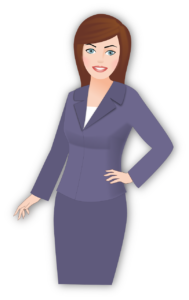 Find past episodes of the show below and be sure to subscribe on iTunes so you never miss an episode.
Find past episodes of the show below and be sure to subscribe on iTunes so you never miss an episode.
How to Battle Negative Thoughts
 As we get closer to each new year or big change in life we tend to start clearing things away to welcome the new. Instead of just clearing objects, I would like to suggest you clear some negativity also.
As we get closer to each new year or big change in life we tend to start clearing things away to welcome the new. Instead of just clearing objects, I would like to suggest you clear some negativity also. Negativity can be dangerous. When we are thinking, we are building neuro-pathways in our brain. The more often you think a negative thought, the more likely you will think more negative thoughts. It is as if you are building a habit in your brain – something happens and the go-to emotion is negative unless it is a clearly positive happening.
There are other options when something happens that isn’t necessarily positive. One way to stop developing the negative pathways in your brain is to respond constructively to situations. This means thoughts like:
What am I learning from what is happening?
What are my response options?
Can I redirect my go-to negative reaction to, if not positive, at least neutral?
You can also shift your thinking by changing the thought, “Why is this happening to me? To “Why is this happening for me?” Although on the surface it seems a subtle change, in reality it is a huge paradigm shift.
When you think of something happening to you it is more of a victim mentality. If you think something is happening for you, it causes you to reflect.
What is happening?
What is a constructive message I can construe from the event?
Is what is going on useful to me and if so, how?
An open and curious mind when facing potentially negative events gives you the upper-hand. No event is a waste, all events have a possibility of learning within them.
So don’t keep re-enforcing negative pathways in your brain. Pause a moment and ask yourself some questions to see what you can pull from each event that may appear negative at the onset. Be constructive with your experiences no matter the immediate perceived value, negative or positive, and find a way to react that moves you forward and wiser.
Is There a Fire in Your Belly?
 Some time ago I came back from 2 days in Boston, home for the weekend, then a week in Phoenix that ended with me bringing a cold home that caused me to lose my voice and stay in bed for a week.
Some time ago I came back from 2 days in Boston, home for the weekend, then a week in Phoenix that ended with me bringing a cold home that caused me to lose my voice and stay in bed for a week.
As I got better and started back to work and I realized how low my energy was and that it would likely take some days to re-build up to my regular amount of energy.
But I was also low on something else and it was difficult to figure out what at first. I was tired which was reasonable but not just physically tired. I was tired in that way of not feeling the fire in the belly that keeps one pushing forward in life toward their goals.
When you work for yourself you have to be very self-motivating and I am lucky that when I am with a client coaching I am so interested and driven to serve that the fire in my belly is fully ignited, no self-motivation needed.
But it is all the other stuff that has to be done that a fire in the belly motivating you to keep moving forward is necessary because a lot of the necessary work to keep a business running is tedious, or at least tedious to me. That work is doable because you see how it enables the whole. If I do the tedious, I get the opportunity to do what lights me up – to serve and to learn.
The vision, your big WHYs, is how the tedious stuff gets done. It provides the energy.
So I realized that I wasn’t tired so much as I was disconnected to my big WHYs that help me move through the drudgery work so I can do the soul fulfilling work.
That connection to our purpose is really important for people who are affected by ADHD and people who are simply overwhelmed in their lives. Without being connected to our big WHYs it is hard to stay self-motivated for the unexciting parts of our work.
This is why I push my clients to do work of intrinsic interest to them. The more they care about what they do the more likely it is they will have an easier time getting the work done, even the tedious stuff.
To get re-inspired and connect with some of my big WHYs, some mornings I sit down and think about my clients and what I could do for them. Then I think back to clients I have helped who no longer need my services, their successes really help remind me the WHY I am doing this in terms of my need to make a difference by helping people affected by ADHD move forward in their lives. People have helped me to great benefit and now it is my turn to help others.
In addition, I think about my personal big WHYs and re-connect with them also. What is important is I write all this down. By doing that, I am re-committing with the result of my becoming more connected to my professional and personal big WHYs again. This stokes the fire in my belly once again and back to work I go.
Take time to re-connect with your big WHYs, write them down to force yourself to interact with them. This will help you get re-motivated in what you want to be doing or it might show you that what you are doing is not feeding your soul. Everyone must have at least one thing in their life that stirs the fire in their belly. It is what keeps you going.
What I Learned from David Bowie
 I wrote this the week after I learned David Bowie died and I was shocked at how affected I was by his death. I didn’t realize how much he had influenced my life.
I wrote this the week after I learned David Bowie died and I was shocked at how affected I was by his death. I didn’t realize how much he had influenced my life.
Bowie helped the outsiders, the alienated feel recognized, accepted and cool. He also inspired many artists. As some of you know my previous career was as a dancer and choreographer. I always felt a little of an odd man out for two reasons. One I couldn’t learn dance combinations as fast as my peers and this caused a lot of frustration in the dance company. The second reason was that I liked the process of creating a dance or putting together a show more than actually performing the show.
David Bowie was more interested in putting the production together than being on stage. Actually, when he was creating Ziggy Stardust, he was planning to have someone else be Ziggy who would lip sync Bowie’s voice. Once the production was up and performed he was done. To many of us getting to tour 18 months as Ziggy Stardust might seem like a great gig. To him it got boring.
Bowie always liked doing new things, he was usually writing his next album while touring and promoting his current album. He once did 7 albums back to back. In many interviews you hear him say how he easily got bored. When recording he never did more than three takes on any one song, very few by industry standards.
I always felt kind of guilty that I didn’t love performing as a dancer. I know many people who wished they could get a chance to be on stage but never would. I had the chance and did it for the experience but not out of a great need to do it. But the process of creating something was truly exciting for me. Even helping other artists create things was exciting. For me, process is a time of discovery, invention and creation.
Listening to all the coverage about David Bowie’s life and death after his passing, I realized how he had impacted my life. I had a new insight. Coaching, which I think of as my second career and very different from my first career isn’t all that different. The part I really loved was creating in dance – the process. The pieces and productions that I enjoyed the most were collaborative efforts. I realized that Coaching is a collaborative effort. Instead of working toward a production we are working toward a better life. In its own way that is also a production.
Another aspect I liked about creating new dance pieces was watching the dancers grow as artists. In a collaborative effort synergistic moments occur when an idea from one person would meet an idea from another person a third and new idea would be formed almost as though out of thin air.
This synergy that I thought I would miss once when I retired from dancing occurs all the time in coaching sessions with clients. This is exciting to be a part of and is also a privilege to witness the person moving their life forward.
David Bowie’s died on January 10, 2016. January is one of the times of the year that many people take themselves in hand and decide they want to live differently in the new year. This often means wanting to achieve new things, change old things or simply to move forward in their life whatever that means to them.
January is when we decide what kind of production we are going to do for the year and what the scope of the production will be. The result being I get a lot phone calls and inquiries in January about ADHD coaching and people wanting to sign up for my services. So for me, for my production, January is exciting because it is a time when I will be meeting some of the participants of whatever production that we create that year. New clients bring new issues, new ideas and new personalities. As I said to some, I have never had the same client twice that is why my job is so exciting because each new client is a new adventure. Each year results in a different “production.”
The process is always different and the results are always different. That is important for people like us with ADHD because we need to avoid getting bored. Finding excitement in “the process” will help you get things done throughout the year. Processes can be looked at as opportunities to challenge yourself to do things differently and better. This becomes more interesting, less boring, and makes new things easier to accomplish.
“I don’t know where I’m going from here, but I promise it won’t be boring.”
David Bowie
Causing Disruption of Habitual Negative Behaviors
 Often I will hear clients say “it is happening all over again, I am doing or not doing what I always do. I’m stuck in this constant loop and I don’t know how to break out of it.”
Often I will hear clients say “it is happening all over again, I am doing or not doing what I always do. I’m stuck in this constant loop and I don’t know how to break out of it.”
They may be talking about not getting stuff done, procrastinating until the last minute, showing up to work late every day, not doing their fair share in a relationship, talking too much at social events and on and on. The frustration comes from not being able to disrupt the pattern or being able to disrupt the pattern only temporarily and then sliding back to their old ways.
I know how tough this is, I experience it myself and it is not only frustrating but disheartening also. One cannot help but ask oneself “Will it always be this way?” “Am I stuck with this behavior?”
Honestly, I don’t know. I have been successful with some disruptions working and some other things not working as well. But there are two simple things you can start doing on your own to try and get unstuck from a repeating behavior.
First, practice inserting a pause before any action. Just a second or two pause allows the thinking part of the brain to take over from the emotional part of the brain. This may give you the opportunity to question what are you doing, has this worked in the past, is there something else you could do?
Second, start slowing down your processes and really trying to observe every step. Question at every step if there is a flaw in the process and a way to try differently the next time.
Since you are now pausing before every action if you see new opportunities of disruptions you can implement them and see if they work.
This is all about awareness and experimentation. It is not a quick fix but a reflective process in and of itself. So rather than try it in every area of your life at once, pick one thing that you feel stuck in and try this out.
“It is good to have an end to journey toward; but it is the journey that matters, in the end.”
― Ernest Hemingway
What a Good Coach Does
 A good coach helps you realize your vision of success. She holds a safe space for you to talk and discover the “HOW” to achieving your goals and dreams. Whether it is a particular behavior you wish to alter or a path you are trying to succeed at, the coach helps you find the answers you need and helps you to change habits and behaviors that might be getting in your way of success.
A good coach helps you realize your vision of success. She holds a safe space for you to talk and discover the “HOW” to achieving your goals and dreams. Whether it is a particular behavior you wish to alter or a path you are trying to succeed at, the coach helps you find the answers you need and helps you to change habits and behaviors that might be getting in your way of success.
A good coach doesn’t tell you what you should want to achieve, she helps you implement what you want to work on.
Support and accountability, as you envision it, are some of the things you can count on a coach to do. That is the great thing about coaching, you are in the driver’s seat.
Any good coach should have her own coach. First, because if she truly is a student and practitioner of coaching she understands the value of coaching herself, she walks the talk. Secondly, any good coach knows that coaching skills evolve so it is necessary to keep working to improve those skills. There is no endpoint in becoming a good coach, it is a work in progress. There is always more one can learn.
Among the things to think about when seeking out a coach is to ask them what they see their job is as relating to you Also, ask them if they are currently getting coached.
Create a Master Packing List to Ease Your Packing and Traveling
 One of the most helpful things I have been doing for awhile in regards to travel is my Packing List. My Packing List is an incredibly detailed list of all I might need for a trip. You can handwrite one each time you need to travel or you can make a Master Packing List. This is a list that has everything you would need to go on an extended trip. After the list is made on your computer you can print out the Master Packing List whenever you have to go away whether for the weekend or for a month. The list doesn’t change but depending what type of trip and how long you will be away will change what you pack. The List is customized in a very simple way for each trip.
One of the most helpful things I have been doing for awhile in regards to travel is my Packing List. My Packing List is an incredibly detailed list of all I might need for a trip. You can handwrite one each time you need to travel or you can make a Master Packing List. This is a list that has everything you would need to go on an extended trip. After the list is made on your computer you can print out the Master Packing List whenever you have to go away whether for the weekend or for a month. The list doesn’t change but depending what type of trip and how long you will be away will change what you pack. The List is customized in a very simple way for each trip.First you create the most detailed Master Travel List you can. This means everything you might need to take on a trip. Remember this is the Master Travel List so everything should go on it in detail.
Then when it is time to travel, you simply print out the list and using a pen or pencil to cross out the items you will not need for your trip. It is important that the list is so exhaustive that you rarely if ever have to add to the list, only subtract.
Once you have your List printed out and have crossed off what you won’t need (based on where you are going, why you are going and how long you are going for) the List is ready to help you pack.
Using the List pull out everything you need for the trip and spread it out on your bed or a table. This helps you to make sure you have everything before you start packing. It also tells you what size bag or bags you are going to need. In addition, with every item laid out that you are taking you can see the best way to make it all fit. For example put your socks inside of your shoes to save space.
As you start actually packing the items you have spread out place a checkmark by the item on the Master Travel List that you have already printed out and crossed off what is not necessary for the particular trip.
When it is time to re-pack at the end of your trip, as you put the items in your bag, draw a slash through the item’s checkmark. This will create an X. Once you are all packed up to return home check to make sure every item that was checked at the beginning of the trip now has an X before you leave to come home.
If there is a checkmark that doesn’t have a slash that means it is still in your room and needs to be packed up.
This method helps you not only to remember what you need for your trip but also makes sure that everything comes home with you as well. Make your Master Travel List today.
